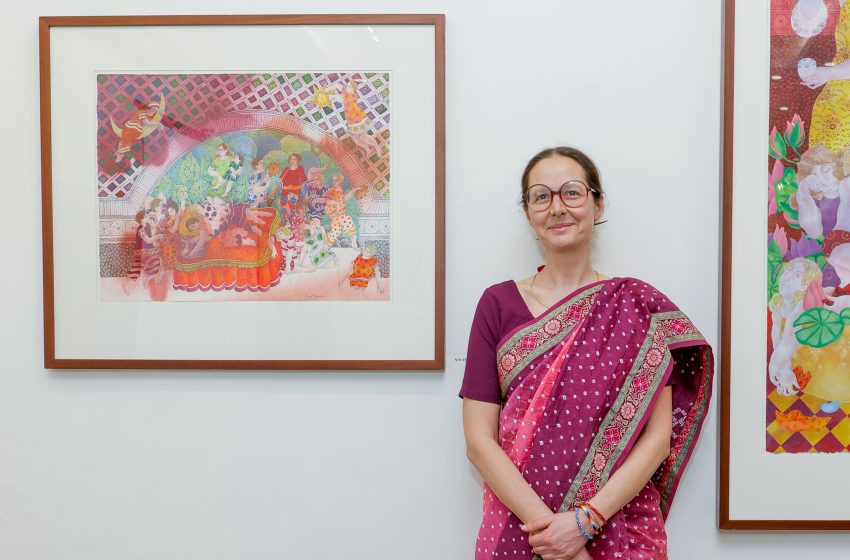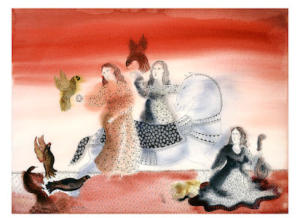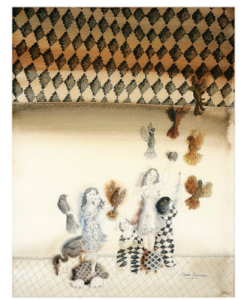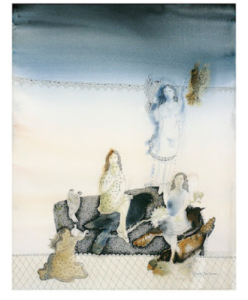Maya Burman’s ‘Garden of Dreams’ showcases her artistic evolution

Rajkumari Sharma Tankha
Garden of Dreams showcases the artistic journey of artist Maya Burman. Curated by Amrita Kochhar, the exhibition seamlessly merges Maya Burman’s early works from the 1990s with her contemporary creations, creating a unique dialogue between two distinct periods of her journey showing her ability to weave dreams into reality through her art.
“The are 18 works out up in this show are very specific. While working on the film Maya, the Golden Light, I went through all my paintings from the last 25 years. I could see a significant change between the work I did in the ’90s and my work today. I also realized that what has been made cannot be done again. My hand, my imagination, and my sensibility are completely different. I decided to mix my earlier work with my current paintings, creating a dialogue between two periods of my life,” she says. Burman tells us more about her life and art:
So, tell us more about this show, and what prompted you to hold it?
This exhibition, Garden of Dreams, is divided into two parts. 1 quart is made of 18 works that I did for this occasion. They are mixed media works. I have revisited productions of my old works. I was very surprised to see the gap between my imagination today and the world I depicted more than 20 years ago – those works are a dialogue between those two periods of my work life.
The second part of the show is my collection of work that I have kept for myself over the years. Paperworks and oil paintings.
We put up the show to go along with the screening of the film of Joy Banerjee, Maya the Golden Light. We wanted the public to enjoy the work in reality after seeing these in the film.
What brings you to India, again and again?
I am exhibiting now in India for last 25 years. It’s always a pleasure to see that my paintings are so well received by the Indian public. The universe I am depicting in my works, which is so personal to me is touching the Indian sensibility also. This is the magic of painting. Being half-Indian, half-French, nothing is surprising in the pleasure I have to come and work in India.
What draws you towards painting – you studied architecture but turned into a full-time painter.
Painting has always been around me. It was my parents’ job so I was brought up with two full-time painters around me. The paintings and the exhibitions were giving a specific rhythm to my life. But I never wanted to become a painter and I always did everything that was possible to get away from it.
Still, I was always drawing as a hobby and during my studies of architecture, though I didn’t realise it then. Again, even when painting became a central point of my life, I did not consider it as a business. It took me a long time to realise and accept that I was a painter.
Please share your growing up years as an artist, your journey.
Staying close with my parents has been a starting point of my artistic journey. To have people working the whole day on their painting was nothing surprising for me. So, when I started to paint the whole day, it was a kind of evidence for me and for everybody.
I built up my technique and my style by working alone at home. It was not an academic way of entering into painting. I was able to show my parents my work every day and they used to talk about each of my work – sharing their opinion, which gave me an opportunity to look at my work from a different angle, to analyse what I was doing, and why I made a work in a particular way.
I believe my parents were very happy to see me painting. They might have been also afraid to see me choosing this way of life since they knew from their experience that the life of an artist is not a bed of roses. Yet, they always encouraged me, never put pressure.
Which is your favourite medium, and why?
My favourite medium is ink watercolour and pencil colour on paper. My first works were made only in black-and-white with ink on paper – that was when I was studying architecture. Architecture. I began with what I had: my ink pen. Then slowly I added colour, first water colour then after years I picked up colour pencils.
I also work with oil paints. My universe of course remains the same but oil paints give a totally different result: more bright, more shiny. Texture is more creamy. Oil paints allow me to work on bigger canvases, much bigger than paper.
Recently, I have been working on sculpture. This is a totally different way of depicting my universe – from the two dimensions of the paper I have switched to three dimensions. This is very exciting to see the painting in volume and to share the space with the people I am depicting.
Any upcoming shows?
Right now I am working on the solo show that will happen hopefully end of next year. My work is taking a lot of time due to the profusion of details.
What do you do in your free time?
For last few years, I am living in the countryside, not in Paris. I have discovered the pleasure of gardening. So, my days are divided between my studio and my vegetable garden. I was very surprised that Joy Banerjee in his film decided to show my garden. But this is true that my every day life is very much present in my painting. My flowers and my vegetables are taking part in my composition every time.
At Nayan Naveli Gallery in Greater Kailash, New Delhi till March 12, 11am to 7pm




